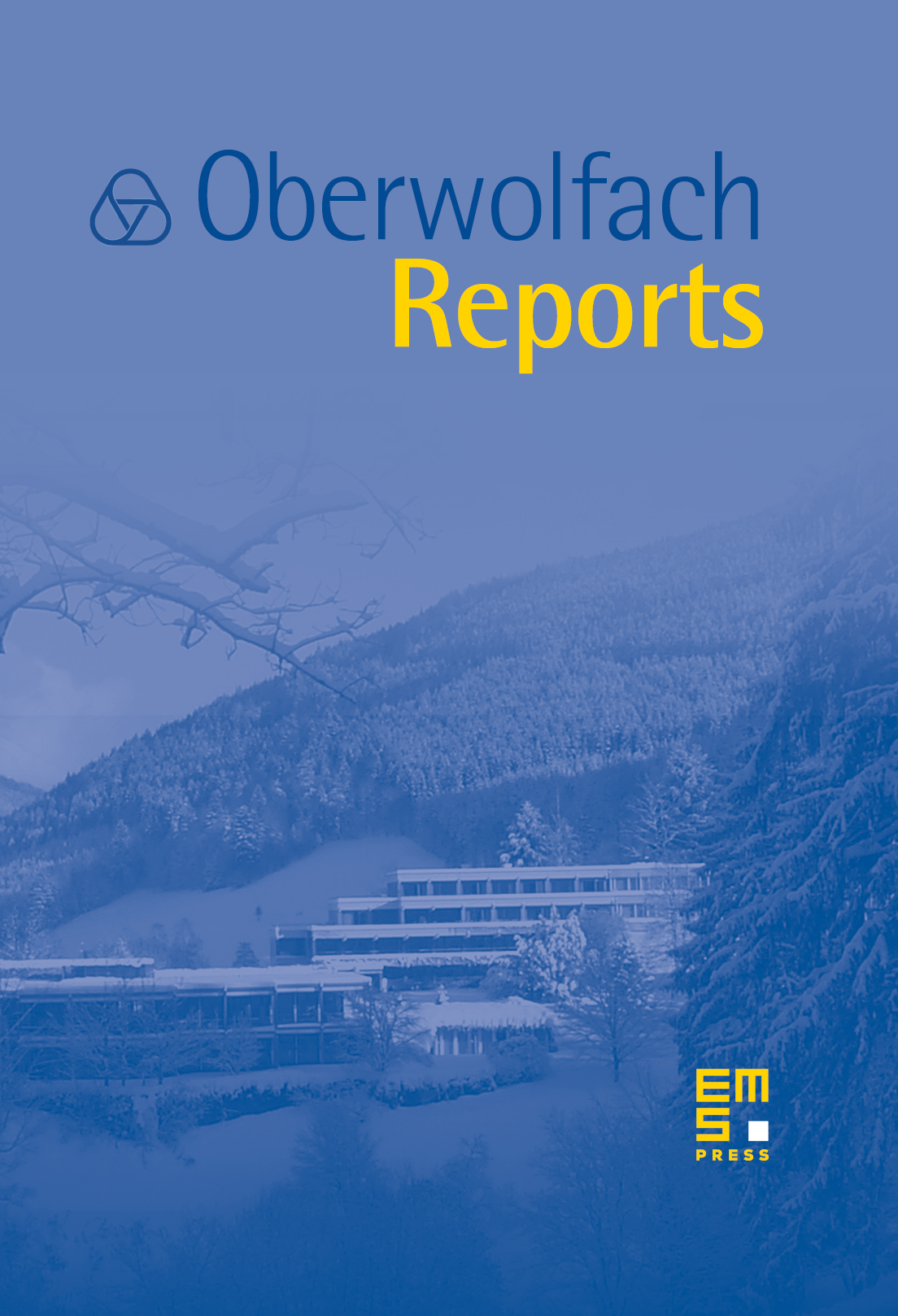Mini-Workshop: Symmetric Varieties and Involutions of Algebraic Groups
Simon Goodwin
University of Birmingham, Edgbaston, United KingdomRalf Gramlich
Technische Hochschule Darmstadt, Germany

Abstract
The topics of this conference all in some way evolved from the classical theory of real and complex Lie groups. Indeed, one of the important mathematical goals during the 1950's was to find analogs of the semisimple Lie groups of exceptional type over arbitrary fields. Chevalley completed the first crucial step by producing his famous basis theorem for simple complex Lie algebras, and later Steinberg succeeded in describing these analogs group-theoretically. An important development due to Tits was the theory of groups with a -pair and invented buildings; these buildings belong to arbitrary Chevalley groups as naturally as the projective spaces belong to the special linear groups.
Since then the theories of algebraic groups and of buildings developed into various directions. However, due to their common origin both theories often lead naturally to similar questions which were attacked by completely different means. In the context of this conference, the PhD thesis by Bernhard Mühlherr and the work by Aloysius Helminck and coauthors on involutions of algebraic groups illustrate this in a quite remarkable way. Both projects contributed strongly to the understanding of the geometry of involutions of algebraic groups, but surprisingly each one has gone unnoticed by the researchers of the other until recently.
One of the main objectives of this conference was to bring these two theories closer to each other. The first two lectures on Monday morning familiarised all participants with the concept of buildings; Pierre-Emmanuel Caprace explained the foundations of buildings from the simplicial point of view, while Bernhard Mühlherr introduced the chamber system approach to buildings and explained the power of filtrations when studying sub-geometries of (twin) buildings that arise from the action of certain subgroups of the isometry group of the (twin) building. As these two lectures were of an introductory nature and since their content is already well documented (we refer to the recently published book by Abramenko and Brown for the theory of buildings and to the contributions of Alice Devillers and of Hendrik Van Maldeghem to the Oberwolfach report 20/2008 for an account on filtrations and their powerful applications), we do not include acstracts of these lectures.
On Monday afternoon and on Friday morning Aloysius Helminck presented the theory of involutions of algebraic groups, while in Monday's final lecture Max Horn showed how to combine Helminck's theory with M"uhlherr's PhD thesis in order to obtain general and powerful results on the geometry of involutions of groups with a root group datum, a class of groups that contains the semisimple algebraic groups, the split Kac–Moody groups, and the split finite groups of Lie type.
Most of Tuesday and part of Wednesday were focussed on the Tits centre conjecture. In a series of two lectures Gerhard Röhrle and Michael Bate presented an algebraic-group approach towards proving the conjecture, while on Tuesday afternoon Katrin Tent presented a combinatorial approach and on Wednesday morning Linus Kramer reported on metric considerations in the context of the Tits centre conjecture. It is our impression that these four lectures have triggered additional activity towards proving the centre conjecture, and that one or more of these approaches will be successful in the near future.
The fourth talk on Tuesday afternoon was given by Yiannis Sakellaridis on spherical varieties and automorphic forms, while the second talk on Wednesday by Lizhen Ji presented compactifications of locally symmetric spaces. Thursday's talks by Sergey Shpectorov and by Paul Levy concentrated on involutions of affine buildings, respectively automorphisms of finite order of semisimple Lie algebras.
The remaining three talks were more topologically in nature. Guy Rousseau presented his theory of microaffine buildings, hovels, and Kac–Moody groups over ultrametric fields on Thursday. Thursday's fourth talk was by Bertrand Rémy on Satake compactifications of buildings via Berkovich theory. The conference was concluded by Pierre-Emmanuel Caprace's report on aspects of the structure of locally compact groups.
We are particularly pleased by the lively interaction between the participants during the long afternoon breaks (each morning's lectures finished at 11.30 a.m. while the afternoon sessions only started at 4.20 p.m.) and during the evenings.
Cite this article
Simon Goodwin, Ralf Gramlich, Mini-Workshop: Symmetric Varieties and Involutions of Algebraic Groups. Oberwolfach Rep. 5 (2008), no. 4, pp. 2985–3028
DOI 10.4171/OWR/2008/53